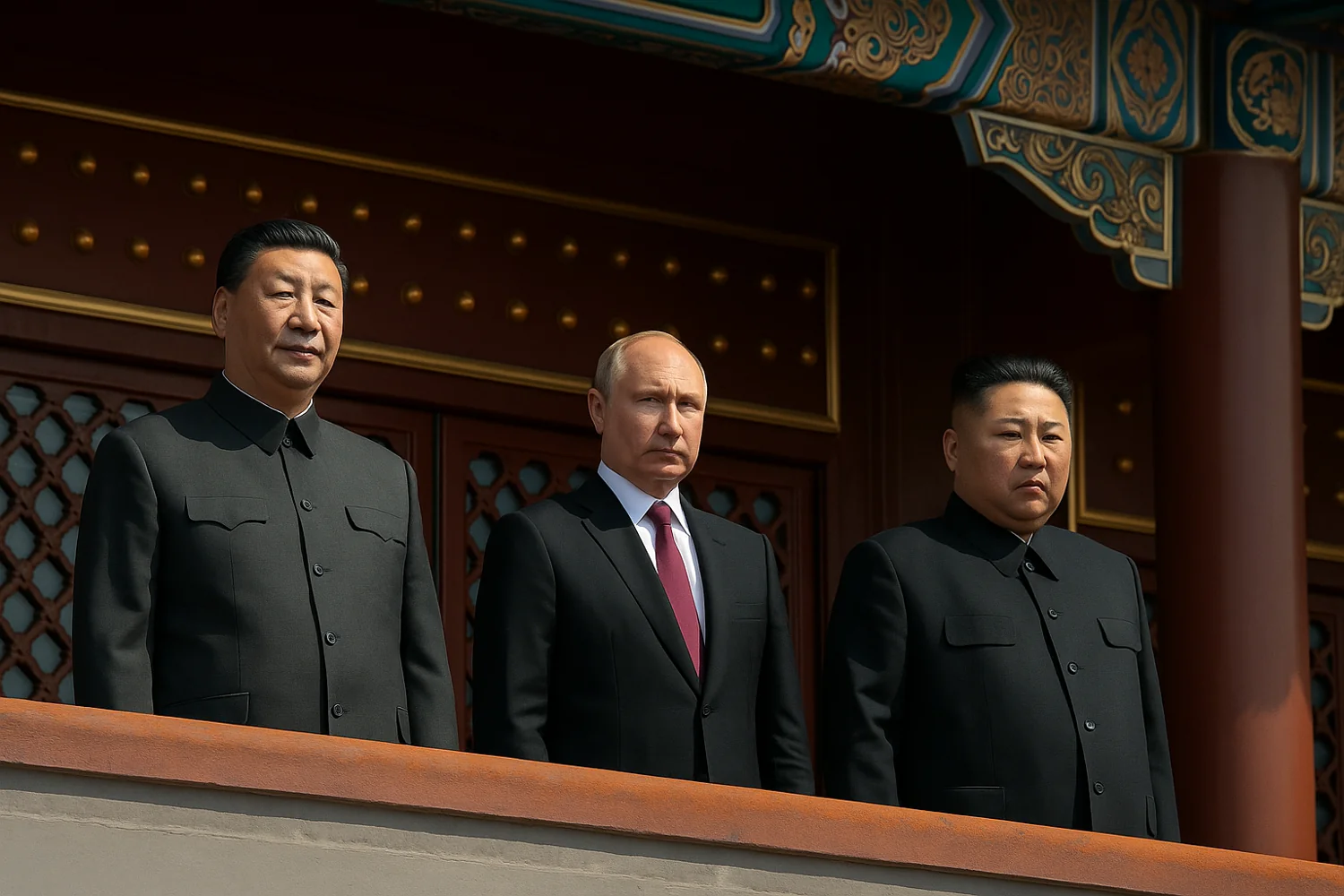The China military parade is being sold as a commemoration of World War II, but I see it for what it is: a display of authoritarian solidarity. By placing Vladimir Putin and Kim Jong Un at the heart of the event, Xi Jinping makes clear his ambition to present an alternative world order. This is not celebration—it is choreography for confrontation.
Context: Beijing’s selective memory
On September 3, Beijing will host more than two dozen leaders in Tiananmen Square to mark the 80th anniversary of Japan’s surrender. Officially, the China military parade is about honoring sacrifices of the past. But Xi’s script conveniently sidelines the truth that China’s “victory” was followed by decades of authoritarian rule.
Kim Jong Un’s presence is telling. He has not visited Beijing since 2019, and his attendance is a clear sign that North Korea’s dependence on China is intact. Putin’s appearance, meanwhile, offers him an international stage as Russia sinks deeper into its war against Ukraine. The absence of Western leaders underlines the divide: Beijing no longer wants shared remembrance—it wants polarized alignment.
US and Europe’s hesitation in Ukraine shows how authoritarian regimes exploit democratic indecision. The parade is the opposite: a show of unity against the West.
Defiance disguised as remembrance
The China military parade is designed to project strength against the West. Hypersonic weapons, drones, and missile systems will roll through Tiananmen, with state media broadcasting Xi, Putin, and Kim standing shoulder to shoulder. What message does this send? That sanctioned regimes can thrive by standing together.
China’s officials praise “traditional friendship” with North Korea. Yet this “friendship” now looks more like a strategic axis, binding three nuclear powers against democratic alliances.
Analytical breakdown: the real purpose of the parade
The scale of the spectacle is staggering: 10,000 troops, 100 aircraft, and hundreds of armored vehicles. All equipment is domestic, a point Xi stresses to emphasize China’s military independence.
But the timing matters most. North Korea recently signed a defense pact with Russia, promising mutual military support if either is attacked. Combined with China’s role as Pyongyang’s economic lifeline, the parade becomes proof of a deeper triad.
Xi’s stagecraft aims to normalize this bloc. What NATO is to the West, this “parade alliance” could become to the East—an informal but dangerous counterweight.
Trump-Putin Alaska meeting highlights how global strongmen increasingly coordinate. The parade cements China as the stage manager of this alliance.
Human perspective: fear behind the pageantry
Ordinary Chinese citizens will be told to feel pride. North Koreans will see Kim among world leaders and believe their country is respected. Russians will be reassured that sanctions cannot isolate them.
Yet for people in neighboring countries—Taiwan, Japan, South Korea—the imagery sparks fear. The sight of three autocrats united under military banners is not reassurance; it is intimidation.
Counterarguments: just spectacle, no substance?
Some claim the China military parade is nothing more than political theater. I reject that. Political theater at this scale creates reality. When three leaders accused of aggression and repression appear together, it signals to allies and enemies alike that cooperation runs deeper than optics. Myanmar’s junta chief and Russia-friendly European leaders’ attendance confirms this parade is part of an expanding network.
Conclusion: authoritarianism on parade
The China military parade is not about the past. It is about the future. By uniting Putin and Kim under Xi’s watch, the event announces the rise of a new authoritarian alliance.
Western democracies cannot afford to dismiss this as empty symbolism. History teaches us that parades often foreshadow wars as much as they celebrate peace. This spectacle is a warning: an axis of defiance is marching in plain sight. Will the world pay attention?
